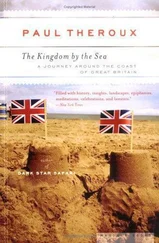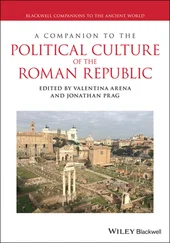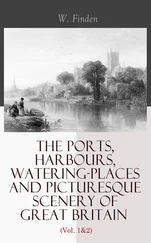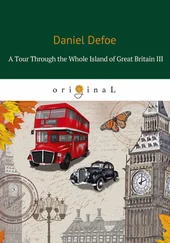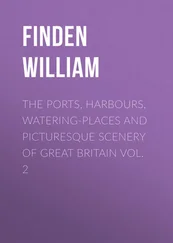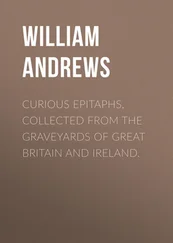The Normans introduced the strong system of government that’s why the Anglo-Norman kingdom was the most powerful political force in the British Isles. The authority of the English monarch gradually extended to other parts of these islands in the next 210 years. By the end of the thirteenth century, a large part of eastern Ireland was controlled by Anglo-Norman lords in the name of the English king and the whole of Wales was under his direct rule (at which time the custom of naming the monarch’s eldest son the ‘Prince of Wales’ began). Scotland managed to remain politically independent in the medieval period, but was obliged to fight occasional wars to do so.
The cultural story of this period is different. Two hundred and fifty years after the Norman Conquest a Germanic language (Middle English) but not the Norman (French) language became the dominant one in all classes of society in England. Furthermore, the Anglo-Saxon concept of common law, but not Roman law, formed the basis of the legal system.
Despite English rule, northern and central Wales was never settled in great numbers by Saxon or Norman. As a result the (Celtic) Welsh language and culture remained strong. The Anglo-Norman lords of eastern Ireland remained loyal to the English king but, despite laws to the contrary, mostly adopted the Gaelic language and customs.
By the end of this period there was a cultural split in Scotland between the lowlands, where the way of life and language was similar to that in England, and the highlands, where (Celtic) Gaelic culture and language prevailed.
Parliament appeared in this period in England. The word ‘parliament’ comes from the French word parler (to speak), and was first used in England in the thirteenth century to describe an assembly of nobles called together by the king. In 1295, the Model Parliament set the pattern for the future by including elected representatives from urban and rural areas.
Exercise 1Can you answer these questions?
1) Who were the first to inhabit the British Isles?
2) Which part of the British Isles was named Britain and why?
3) When did the army of Julius Caesar first invade Britain?
4) What was the function of ‘Hadrian's Wall’ during the Roman conquest?
5) What kingdoms were formed by the Germanic tribes?
6) When did the Norman invasion to Britain begin?
7) When did the first Parliament appear?
Exercise 2Test yourself: choose the most suitable answer.
1 What ancient tribes inhabited the British Isles B.C.?
a) the Celts;
b) the Saxons;
c) the Angles;
d) the Vikings.
2 Which part of the British Isles was named Britain?
a) Southern;
b) Northern;
c) Western;
d) Eastern.
3 Together with a high civilization the Romans brought… to the country.
a) Slavery;
b) Culture;
c) Destruction;
d) Christianity.
4 The Saxons formed several kingdoms in the… part of Britain?
a) north-eastern;
b) south-eastern;
c) south-western;
d) western.
5 What led the Anglo-Saxons kingdoms to unification?
a) idea about wealth;
b) task of defending the country;
c) cold weather;
d) good relations.
6 When did the Norman invasion to England begin?
a) 1066;
b) 829;
c) 1576;
d) 1606.
7 Who became the king of England after the Norman invasion?
a) William the Conqueror;
b) King Egbert;
c) Henry IV;
d) Henry VIII.
8 The Normans spoke …and it was the language of the upper classes.
a) English;
b) German;
c) French;
d) Russian.
9 What is the most mysterious monument of the British past?
a) Ben Nevis;
b) Stonehenge;
c) Hadrian Wall;
d) Big Ben.
10 What was Robin Hood famous for?
a) He was a very handsome man.
b) He was the Norman’s leader.
c) He helped poor people.
d) He was one of the British kings.
Exercise 3Complete the gaps in the text with the appropriate forms of the verbs given on the right.
Roman Roads
Within four years of invading Britain in AD 47, the Romans had built over 1,000 miles of roads!
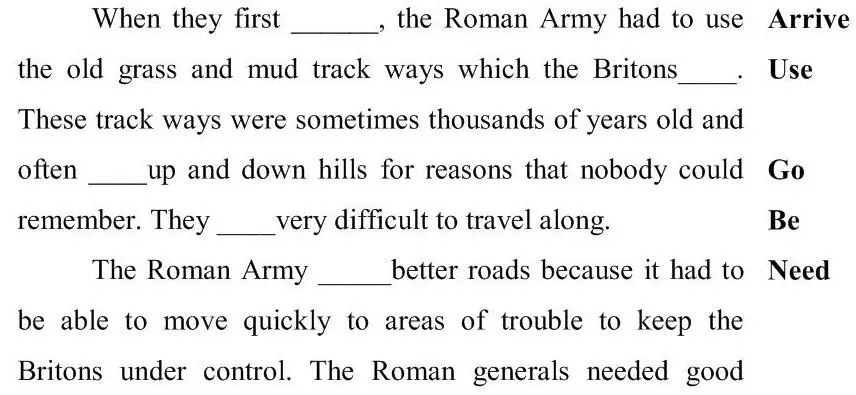
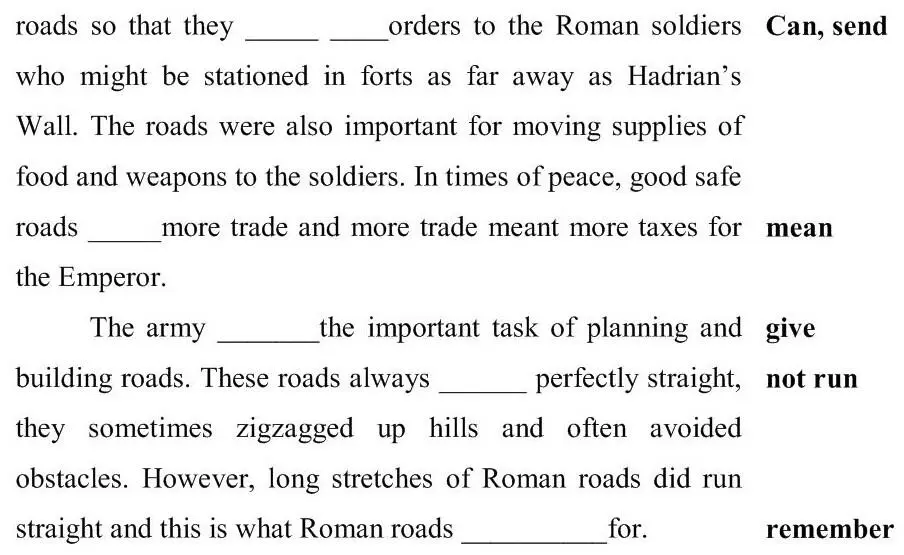
Exercise 4Read the text and answer the questions:
1. List the reasons why the Roman Army built roads.
2. Which of these reasons do you think is the most important?
3. Explain in your own words what a Groma was and how it was used to build straight roads.
4. Why were Roman roads quick and safe to travel on?
5. Why was the surface of a Roman road curved?
So how did the Romans manage to build such straight roads?
Roman engineers used an instrument called a Groma. This was a pair of boards fastened together into a cross shape. Lines with weights were hung from each corner so that they could get a straight line by lining up the weights with a pole a hundred meters or so away. In forest areas they built fires in a straight line and used the smoke as markers for the Groma.
Once the road had been planned the Roman soldiers dug two ditches on either side of the road to act as drains. The earth from these ditches was piled into the centre and rammed down. Stones were then gathered from the local area and laid down in different layers until they formed a hard surface that could take the weight of heavy carts. The surface of a Roman road was shaped into a camber so that rain water would run off into the ditches.
Roman roads were very quick and safe to travel large distances. The Roman soldiers were not the only people to use them. Merchants used them to carry goods all over the Roman Empire. The Romans built Britain's first proper roads. After the Romans left they were allowed to decay because people forgot how to rebuild and repair them. People continued to use the roads the Roman Army had built until 1745. Many modern roads are built along the original routes planned out by the Romans.
Did you know?
– Silburry Hill, in the English county of Wiltshire, is the largest man-made earthen mound in Europe. It was built about 4750 years ago.
– The stone circle at Avebury is the largest in the world. It was built between 5300 and 4600 years ago and covers 11 ha (28 acres). The outer circle is surrounded by a bank and ditch long of 1,5 km (1 mile).
– The so-called British Imperial system of measurement (English units in the USA) has its roots in Roman units. The Romans also counted in feet, which they divided in 12 inches (unciae in Latin, from which the English word is derived). 5 feet made a pace, and 1000 paces (mille passus) became a mile in English. The Roman gallon was the congius (worth 0,92 U.S. gallons). The word pint comes from Latin picta ("painted"), via the Old French pinte, and corresponded to a painted mark on a vessel indicating this measure. Other units like the pound only evolved in the Middle Ages.
– Colchester in Essex is the oldest recorded town in Britain, as well as the first Roman town and Roman capital of Britain. Colchester Castle has the largest keep ever built in Europe, having a land area 50 % bigger than the Tower of London.
– The Fossdyke, connecting the River Trent at Torksey to Lincoln, is the oldest canal in Britain. It was built by the Romans around 12 °CE and is still navigable today.
3 History of Britain: from the Middle Ages to the Modern Times
Читать дальше



